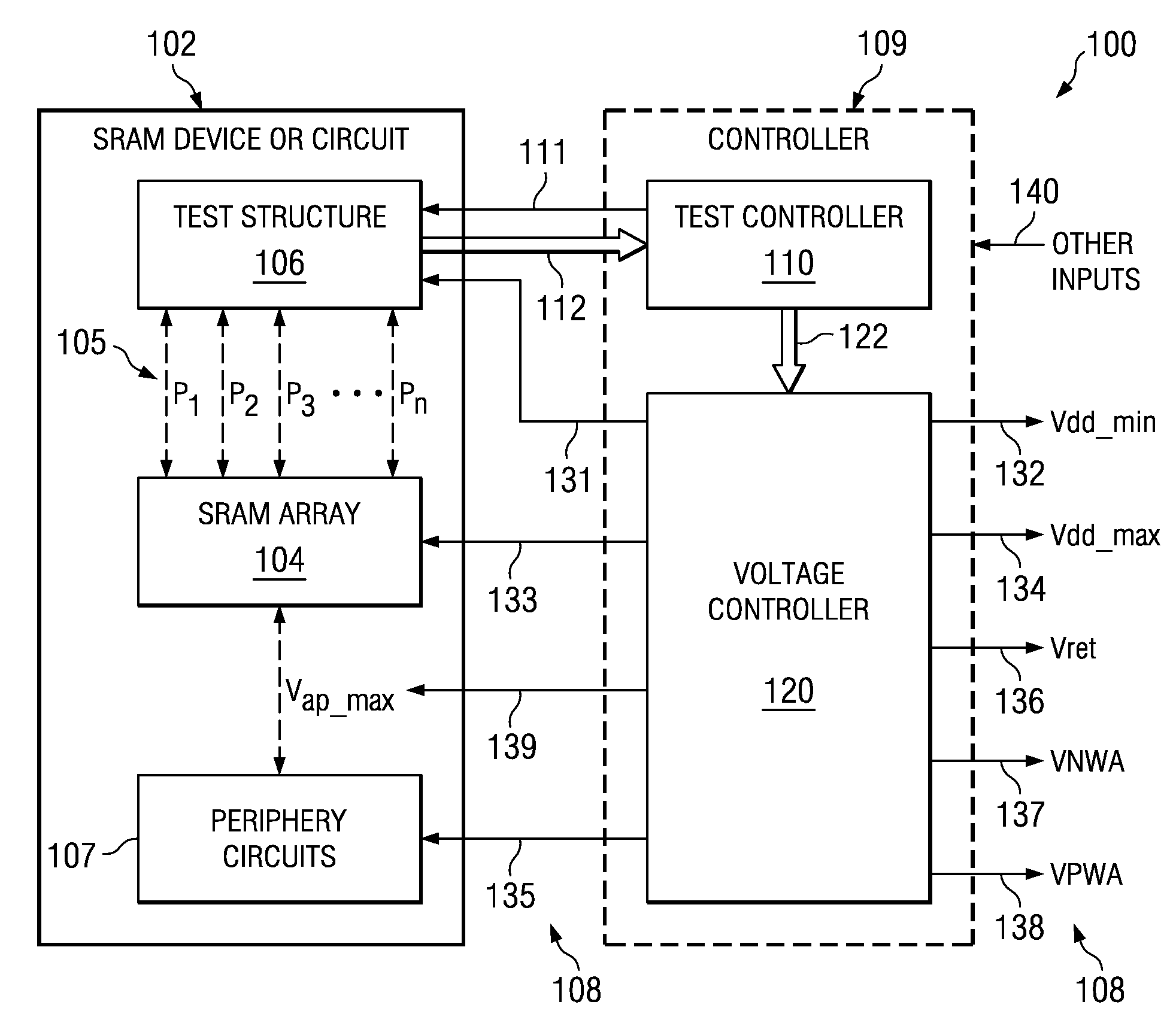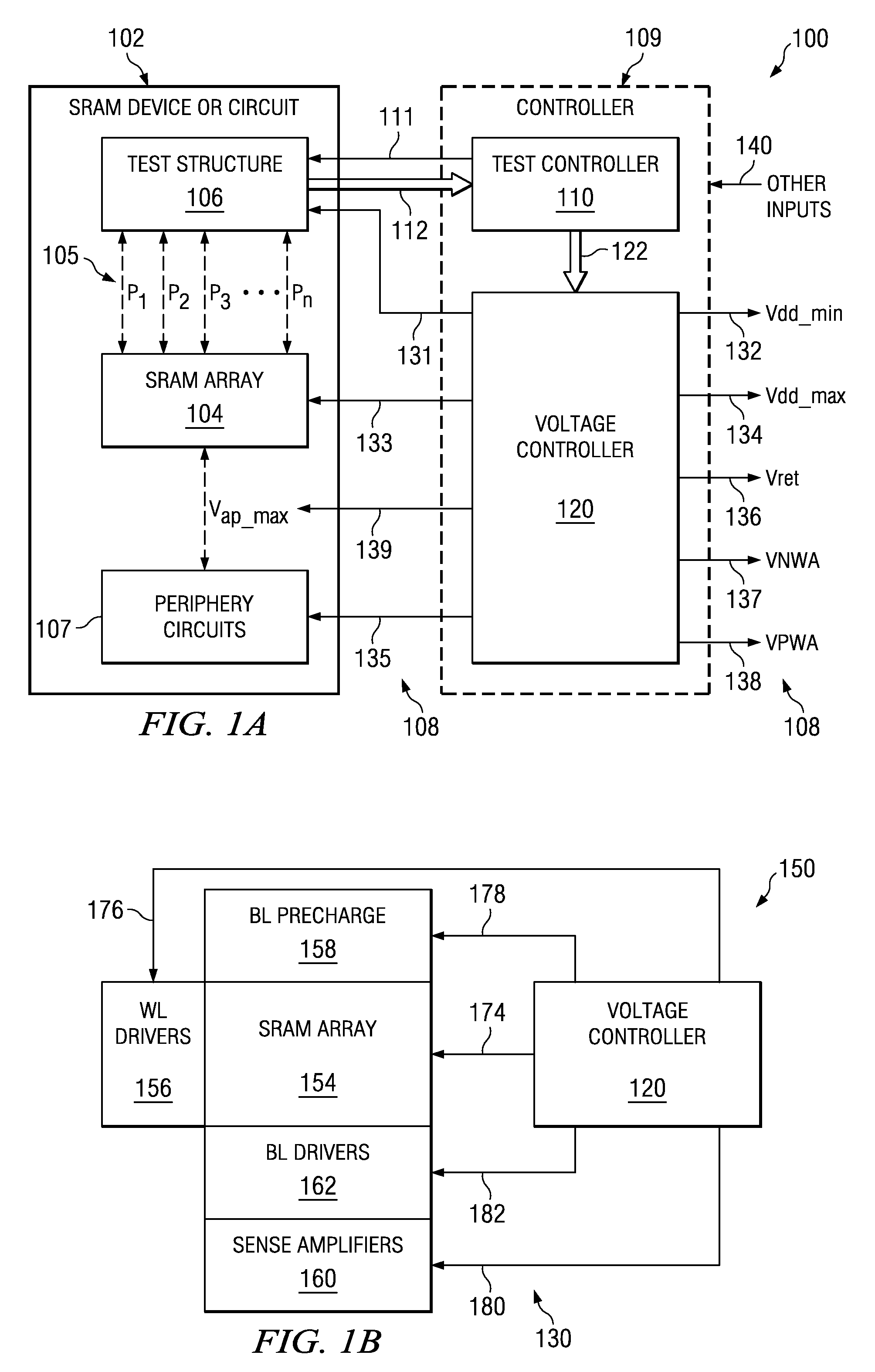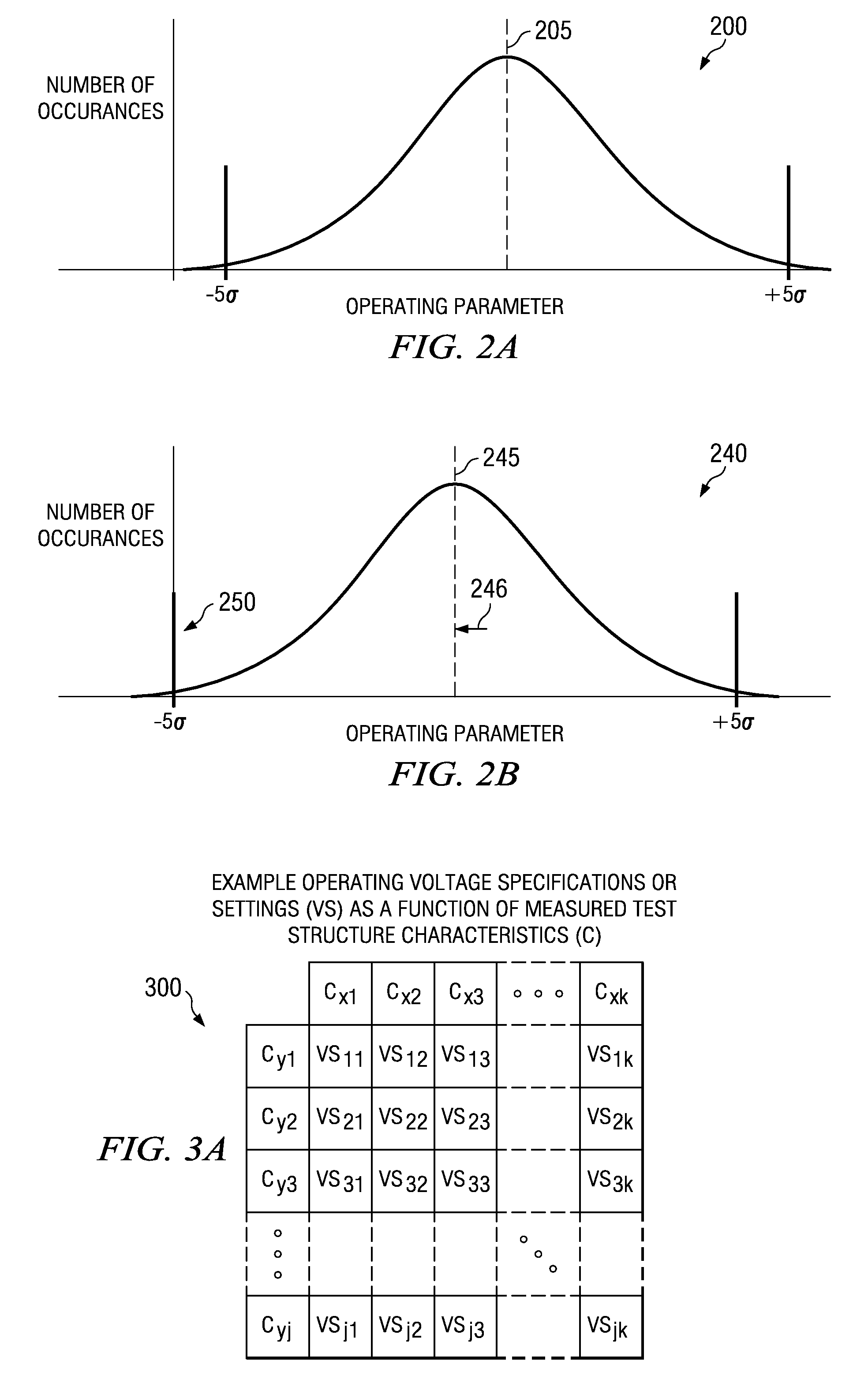Adaptive voltage control for SRAM
a voltage control and adaptive technology, applied in the field of integrated circuit design, can solve the problems of limiting the range of operating parameters (e.g., snm and/or vtrip) of the sram cell incurred from the global variation of the circuit elements, and the minimum operating voltage vmin for a chip with a low vtn might be limited by the snm requirements, so as to maintain functionality and performance, reduce power, and spread the characteristics of th
- Summary
- Abstract
- Description
- Claims
- Application Information
AI Technical Summary
Benefits of technology
Problems solved by technology
Method used
Image
Examples
Embodiment Construction
[0025]One or more aspects of the present invention are described with reference to the drawings, wherein like reference numerals are generally utilized to refer to like elements throughout, and wherein the various structures are not necessarily drawn to scale. In the following description, for purposes of explanation, numerous specific details are set forth in order to provide a thorough understanding of one or more aspects of the present invention. It may be evident, however, that one or more aspects of the present invention may be practiced with a lesser degree of these specific details. In other instances, well-known structures and devices are shown in block diagram form in order to facilitate describing one or more aspects of the present invention.
[0026]An adaptive voltage control (AVC) system is implemented to set the operating voltages of an SRAM memory device utilizing a structure or test structure that evaluates or characterizes one or more global parameters that are related...
PUM
 Login to View More
Login to View More Abstract
Description
Claims
Application Information
 Login to View More
Login to View More - R&D
- Intellectual Property
- Life Sciences
- Materials
- Tech Scout
- Unparalleled Data Quality
- Higher Quality Content
- 60% Fewer Hallucinations
Browse by: Latest US Patents, China's latest patents, Technical Efficacy Thesaurus, Application Domain, Technology Topic, Popular Technical Reports.
© 2025 PatSnap. All rights reserved.Legal|Privacy policy|Modern Slavery Act Transparency Statement|Sitemap|About US| Contact US: help@patsnap.com



